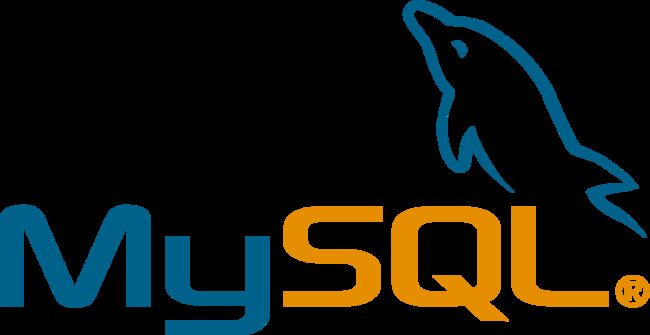Linux Centos7 (Windows)系统安装 MySQL
Linux Centos7 (Windows)系统安装 MySQL
MySQL 是最流行的关系型数据库管理系统,在 WEB 应用方面 MySQL 是最好的 RDBMS(Relational Database Management System:关系数据库管理系统)应用软件之一。
优秀博客:
https://blog.csdn.net/jubincn/article/details/6725582
http://www.runoob.com/mysql/mysql-install.html
https://www.jianshu.com/p/5f693b4c9468
MySQL 安装
检测系统是否自带安装 MySQL:
rpm -qa | grep mysql
如果你系统有安装,那可以选择进行卸载:
rpm -e mysql // 普通删除模式
rpm -e --nodeps mysql // 强力删除模式,如果使用上面命令删除时,提示有依赖的其它文件,则用该命令可以对其进行强力删除
安装 MySQL:
yum 资源包:https://dev.mysql.com/downloads/repo/yum/
[root@localhost software]# wget http://repo.mysql.com/mysql-community-release-el7-5.noarch.rpm
[root@localhost software]# rpm -ivh [root@localhost software]# mysql-community-release-el7-5.noarch.rpm
[root@localhost software]# yum update
[root@localhost software]# yum install mysql-server
权限设置:
[root@localhost software]# chown mysql:mysql -R /var/lib/mysql
初始化 MySQL:
[root@localhost software]# mysqld --initialize
注意:
可能会出现以下错误提示
Please read "Security" section of the manual to find out how to run mysqld as root!
原因:
Mysql的解释是:永远不要使用root帐号启动MySQL Server。这样做很危险,因为拥有FILE’权限的用户会使得MySQL Server使用root帐户创建文件(比如,~root/.bashrc),为了防止类似的事情发生,mysqld默认拒绝用户使用root帐户启动,但root用户可以通过在命令后面加上"–user=root"选项来强行启动mysqld。
解决方法:
[root@localhost software]# vim /etc/my.cnf
新增:
user=mysql #或者user=root
启动 MySQL:
[root@localhost software]# systemctl start mysqld
查看 MySQL 运行状态:
[root@localhost software]# systemctl status mysqld
mysqld.service - MySQL Community Server
Loaded: loaded (/usr/lib/systemd/system/mysqld.service; enabled; vendor preset: disabled)
Active: active (running) since 五 2019-01-25 21:20:53 CST; 35s ago
Process: 66362 ExecStartPost=/usr/bin/mysql-systemd-start post (code=exited, status=0/SUCCESS)
Process: 66300 ExecStartPre=/usr/bin/mysql-systemd-start pre (code=exited, status=0/SUCCESS)
Main PID: 66360 (mysqld_safe)
CGroup: /system.slice/mysqld.service
├─66360 /bin/sh /usr/bin/mysqld_safe --basedir=/usr
└─66539 /usr/sbin/mysqld --basedir=/usr --datadir=/var/lib/mysql --plugin-dir=/usr/lib64/mysql/plugin --log-error=/var/log/mysqld.log --pid-file=/var/run/mysq...
1月 25 21:20:52 localhost.localdomain mysql-systemd-start[66300]: Support MySQL by buying support/licenses at http://shop.mysql.com
1月 25 21:20:52 localhost.localdomain mysql-systemd-start[66300]: Note: new default config file not created.
1月 25 21:20:52 localhost.localdomain mysql-systemd-start[66300]: Please make sure your config file is current
1月 25 21:20:52 localhost.localdomain mysql-systemd-start[66300]: WARNING: Default config file /etc/my.cnf exists on the system
1月 25 21:20:52 localhost.localdomain mysql-systemd-start[66300]: This file will be read by default by the MySQL server
1月 25 21:20:52 localhost.localdomain mysql-systemd-start[66300]: If you do not want to use this, either remove it, or use the
1月 25 21:20:52 localhost.localdomain mysql-systemd-start[66300]: --defaults-file argument to mysqld_safe when starting the server
1月 25 21:20:52 localhost.localdomain mysqld_safe[66360]: 190125 21:20:52 mysqld_safe Logging to '/var/log/mysqld.log'.
1月 25 21:20:52 localhost.localdomain mysqld_safe[66360]: 190125 21:20:52 mysqld_safe Starting mysqld daemon with databases from /var/lib/mysql
1月 25 21:20:53 localhost.localdomain systemd[1]: Started MySQL Community Server.
验证 MySQL 安装;
在 linux 上目录为 /usr/bin 目录,在 Windows 为 C:\mysql\bin 。
[root@localhost software]# mysqladmin --version
mysqladmin Ver 8.42 Distrib 5.6.43, for Linux on x86_64
[root@localhost software]#
登录:
[root@localhost software]# mysql
Welcome to the MySQL monitor. Commands end with ; or \g.
Your MySQL connection id is 2
Server version: 5.6.43 MySQL Community Server (GPL)
Copyright (c) 2000, 2019, Oracle and/or its affiliates. All rights reserved.
Oracle is a registered trademark of Oracle Corporation and/or its
affiliates. Other names may be trademarks of their respective
owners.
Type 'help;' or '\h' for help. Type '\c' to clear the current input statement.
mysql>
可以测试一下mysql命令:
mysql> show databases;
+--------------------+
| Database |
+--------------------+
| information_schema |
| mysql |
| performance_schema |
+--------------------+
3 rows in set (0.01 sec)
mysql>
Mysql设置密码:
默认的root用户密码为空,以下命令来创建root用户的密码:
[root@localhost software]# mysqladmin -u root password "root";
Warning: Using a password on the command line interface can be insecure.
再次连接
[root@localhost software]# mysql -u root -p
Enter password:
Welcome to the MySQL monitor. Commands end with ; or \g.
Your MySQL connection id is 5
Server version: 5.6.43 MySQL Community Server (GPL)
Copyright (c) 2000, 2019, Oracle and/or its affiliates. All rights reserved.
Oracle is a registered trademark of Oracle Corporation and/or its
affiliates. Other names may be trademarks of their respective
owners.
Type 'help;' or '\h' for help. Type '\c' to clear the current input statement.
mysql>
注意:在输入密码时,密码是不会显示了,你正确输入即可。
Windows 上安装 MySQL
下载地址:https://dev.mysql.com/downloads/mysql/
本次解压完后放在 C:\web\mysql-8.0.11 下。
接下来我们需要配置下 MySQL 的配置文件。
在C:\web\mysql-8.0.11目录下创建 my.ini ,新增以下内容:
[mysql]
# 设置mysql客户端默认字符集
default-character-set=utf8
[mysqld]
# 设置3306端口
port = 3306
# 设置mysql的安装目录
basedir=C:\\web\\mysql-8.0.11
# 设置 mysql数据库的数据的存放目录,MySQL 8+ 不需要以下配置,系统自己生成即可,否则有可能报错
# datadir=C:\\web\\sqldata
# 允许最大连接数
max_connections=20
# 服务端使用的字符集默认为8比特编码的latin1字符集
character-set-server=utf8
# 创建新表时将使用的默认存储引擎
default-storage-engine=INNODB
初始化数据库:
cd C:\web\mysql-8.0.11\bin
mysqld --initialize --console
执行完成后,会有初始密码,回头会用到。
安装:
mysqld install
启动:
net start mysql
在 5.7 需要初始化 data 目录:
cd C:\web\mysql-8.0.11\bin
mysqld --initialize-insecure
然后再 net start mysql 。
登录 MySQL
[root@localhost software]# mysql -u root -p
Enter password:
Welcome to the MySQL monitor. Commands end with ; or \g.
Your MySQL connection id is 8
Server version: 5.6.43 MySQL Community Server (GPL)
Copyright (c) 2000, 2019, Oracle and/or its affiliates. All rights reserved.
Oracle is a registered trademark of Oracle Corporation and/or its
affiliates. Other names may be trademarks of their respective
owners.
Type 'help;' or '\h' for help. Type '\c' to clear the current input statement.
mysql>
输入密码就行,密码默认不显示。
MySQL 重置密码
如果忘记密码,可以在/etc/my.conf文件中在,找到 [mysqld] 之后再它下面,新增一行 skip-grant-tables (跳过密码)
skip-grant-tables
重启
service mysql restart
登录
mysql -u root -p
修改密码 :
mysql> use mysql;
mysql> update user set authentication_string=password("123456") where user='root';
mysql> flush privileges; # 刷新权限
或者:
service mysql stop
进入目录,以安全模式启动 MySQL
cd /usr/local/mysql/bin
./mysqld_safe --skip-grant-tables &
或者
update user set authentication_string=password("123456"),plugin='mysql_native_password' where user='root';
如果问题,欢迎留言:)
